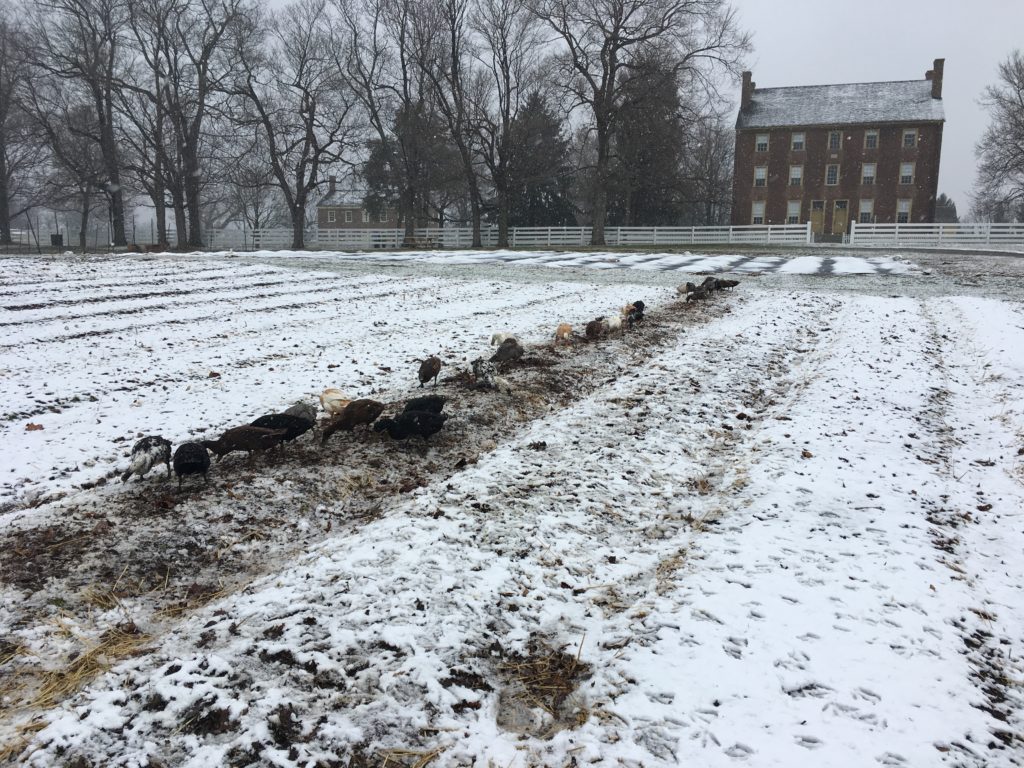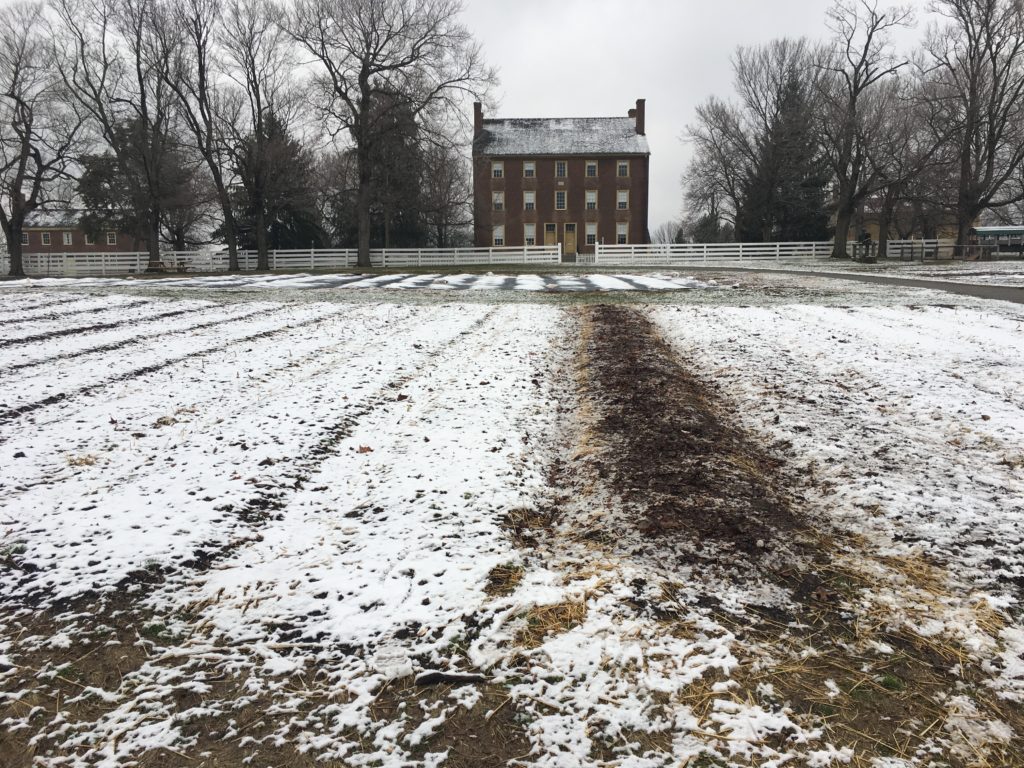J Dylan Kennedy, Farm Manager
During these last weeks of winter, feeding animals becomes our most regular, and important daily task on the farm. The cattle have exhausted all the grazing opportunities, which are slim in the first place, and even the free-ranging ducks have trouble finding unturned leaves and mulch hiding more bugs to eat. Very soon these resources will be plentiful, but for now we feed, and we put a lot of thought into how we feed.
Let’s talk about the ducks.
At Shaker Village we speak a lot about stacking functions, meaning we like to do tasks that accomplish multiple goals for us at once. We also don’t “fertilize” – at least as not in the traditional sense. Instead we manage soil fertility, and our animals are a big part of that. Any time we feed our animals anything that wasn’t grown on our farm, we’re bringing not only the grain, but the fertility that grew it. By thinking of it in this way we can take advantage of that fertility by planning where and how we feed.
In the image below you’ll see our ducks pecking at fermented grain that we have spread along a single garden row. This is something we like to do in the winter time. The snow on the ground today allows the effect the ducks have on the ground where they are fed to be better understood. The ducks usually defecate while they eat, so the area where they are fed receives a focused application of the nutrients which the ducks have ingested over the last several hours. Besides leaving droppings, they turn the top layer of mulch and soil over where they eat, maybe finding bugs, but also helping to aerate thereby promoting microbial life. We are also introducing new microbes into the soil through the fermented grain, or sour mash, that the ducks are eating. These microbes will likely not persist in the soil for long, but will fuel the soil food web, which we want to be as active as possible.

Ducks at work! 
The aftermath…
Of course, our ducks aren’t the only ducks that have this ability. The ducks, like all of our animals, are just doing what ducks do. It’s our job to understand as much as we can about what they do and when and how they do it, so we can take advantage of those actions instead of working against them.
The example of ducks can be applied to cattle and other livestock as well, and we are becoming even more intentional about how and where we feed our cattle. In the coming months we’ll be feeding Shaker Village animals mostly off of our own grounds again. Until then we’ll make the absolute most out of all the nutrition that comes from off-site, feed our animals with it, store it in our topsoil savings account, and withdraw it in the form of vegetables or more animal feed when we need it. It’s the circle of life (cue Lion King soundtrack.)